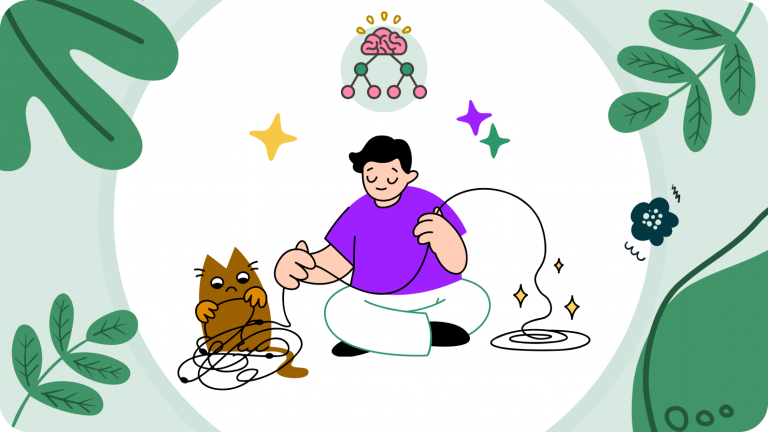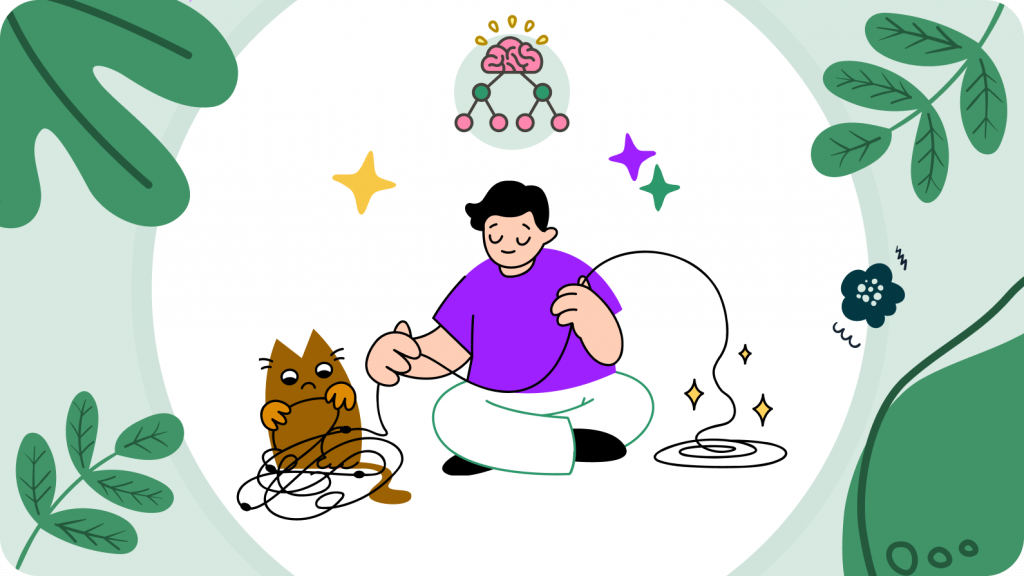Quick Story…
Danni was the epitome of mediocrity. They led a lackluster life, filled with monotony and an abysmal routine that threatened to suffocate every inkling of adventure and spontaneity from their soul. The advertising agency where they worked reduced them to a mere cog in a gargantuan machine, creative inputs quashed under the dense bureaucracy and stringent timelines.
Their life was rutted into a groove: work, home, sleep, repeat. It wasn’t living; it was merely existing.
Danni is caught between burnout and thriving, Danni is languishing.
The human experience encompasses a spectrum of emotional states, ranging from the depths of despair to the heights of flourishing. Languishing, a state characterized by a pervasive sense of emptiness and stagnation, occupies a distinct space on this spectrum. It differs from depression in its absence of severe negative emotions. Still, it nonetheless hinders motivation, engagement, and overall well-being.
Who Cares?
Languishing is characterized by a lack of motivation, engagement, and fulfillment. Keep in mind that languishing is not depression or sadness. It can be experienced as just ‘blah’ or ‘eh,’ maybe a little bit of ‘whatever.’ The research emerged from the neuroscience of emotions. To understand the neurological underpinnings of languishing and to explore pathways toward human thriving, we must delve into the intricate workings of the brain.
Chronic stress, a ubiquitous feature of modern life, can further exacerbate this condition. Neuro scientific research has shed light on the neural biological correlates of well-being and its antithesis conserved transcriptional response to adversity or (CTRA). Which is described as an increase in pro-inflammatory genes. In other words, some of us may have higher adverse childhood events (ACEs) and a propensity to respond strongly to stress (CTRA).
Stress activates the hypothalamic-pituitary-adrenal (HPA) axis, a complex neuroendocrine system that regulates our stress response. When chronically activated, the HPA axis can lead to elevated cortisol levels, which may impair the function of the prefrontal cortex and hippocampus, areas crucial for emotional regulation and memory formation. This dysregulation can manifest as a lack of motivation, difficulty concentrating, and a general sense of emotional flatness – hallmarks of languishing.
Conversely, the brain’s reward system, centered around dopamine and serotonin, plays a crucial role in motivation, pleasure, and overall life satisfaction. When this system is dysregulated, individuals may experience a diminished capacity for experiencing joy and engagement, potentially leading to languishing.
Why try?
Fostering a brain environment conducive to well-being is imperative to move from languishing towards human thriving. Engaging in activities that stimulate the release of dopamine and serotonin, such as:
- NSDR (Non-Sleep Deep Rest)
- Spending time in nature
- Cultivating social connections
- Accepting that I can’t control everything
What can I do?
Cultivating a sense of purpose and meaning in life can be a powerful remedy to languishing. Research suggests that individuals with a strong sense of purpose exhibit increased activation in the ventral striatum, a vital component of the brain’s reward system, during goal-directed tasks. Engaging in activities that align with one’s values and contribute to something larger than oneself can foster a sense of fulfillment and connection, potentially propelling individuals toward thriving.
Sleep, often the first casualty of a busy lifestyle, is another critical pillar of human thriving. Adequate sleep is not just about rest it’s about cognitive function, emotional regulation, and overall well-being. During sleep, the glymphatic system, a recently discovered metabolic waste disposal unit, clears pathways in the brain. It’s like having your own Roomba removing harmful metabolites so your brain can function optimally. If not removed, these metabolites can potentially become harmful. As you can imagine, chronic sleep deprivation can exacerbate feelings of languishing and impair the brain’s ability to consolidate memories and process emotions effectively. Therefore, prioritizing good sleep hygiene practices is crucial for optimal brain function and emotional well-being.
Nutrition plays a vital role in brain health. Eating clean, with a diet balanced in omega-3 fatty acids, antioxidants, and vitamins (clinically proven) improves cognitive function and mood.
Conversely, a diet high in processed foods and unhealthy fats can contribute to inflammation and impair brain function.
How do I bring it all together?
It starts with self-assessment. It is vital to get to know yourself because the “self” is constantly changing. While individual differences exist in how brains respond to these strategies, incorporating them into daily life can significantly enhance one’s capacity for well-being. It is essential to remember that personal growth is a journey, not a destination. It’s an ongoing and ever-changing pursuit that involves active engagement and frequent introspection.
Progress may not always be linear, and setbacks are inevitable. Understanding how you feel after a good night’s sleep by journaling your progress or tracking your performance on a task can lead to more discovery. Seeking support from friends, family, or mental health professionals can provide valuable guidance and encouragement along the way. Having a solid support system provides a crucial safety net during difficult times. This could mean family, friends, therapists, or even furry companions – after all, the power of pet therapy shouldn’t be underestimated. A holistic approach that integrates physical, cognitive, and emotional well-being not just a choice, it’s a necessity for cultivating a fulfilling and meaningful life beyond just existing.
Resources
- Cole SW, Levine ME, Arevalo JM, Ma J, Weir DR, Crimmins EM. Loneliness, eudaimonia, and the human conserved transcriptional response to adversity. Psychoneuroendocrinology. 2015 Dec;62:11-7. doi: 10.1016/j.psyneuen.2015.07.001.
- Gao Y, Liu K, Zhu J. Glymphatic system: an emerging therapeutic approach for neurological disorders. Front Mol Neurosci. 2023 Jul 6;16:1138769. doi: 10.3389/fnmol.2023.
- https://my.clevelandclinic.org/health/body/hypothalamic-pituitary-adrenal-hpa-axis
- https://www.newscientist.com/article/mg26234863-400-are-you-languishing-in-life heres-how-to-find-your-purpose-again/
- https://learningwellmag.org/article/understanding-languishing-and-flourishing-with-dr corey-keyes
- Murdock, M.H., Yang, CY., Sun, N. et al. Multisensory gamma stimulation promotes glymphatic clearance of amyloid. Nature 627, 149–156 (2024). https://doi.org/10.1038/s41586-024-07132-6
- Walton KG, Wenuganen S, Cole SW. Transcendental Meditation practitioners show reduced expression of the Conserved Transcriptional Response to Adversity. Brain Behav Immun Health. 2023 Aug 2;32:100672. doi: 10.1016/j.bbih.2023.100672.















